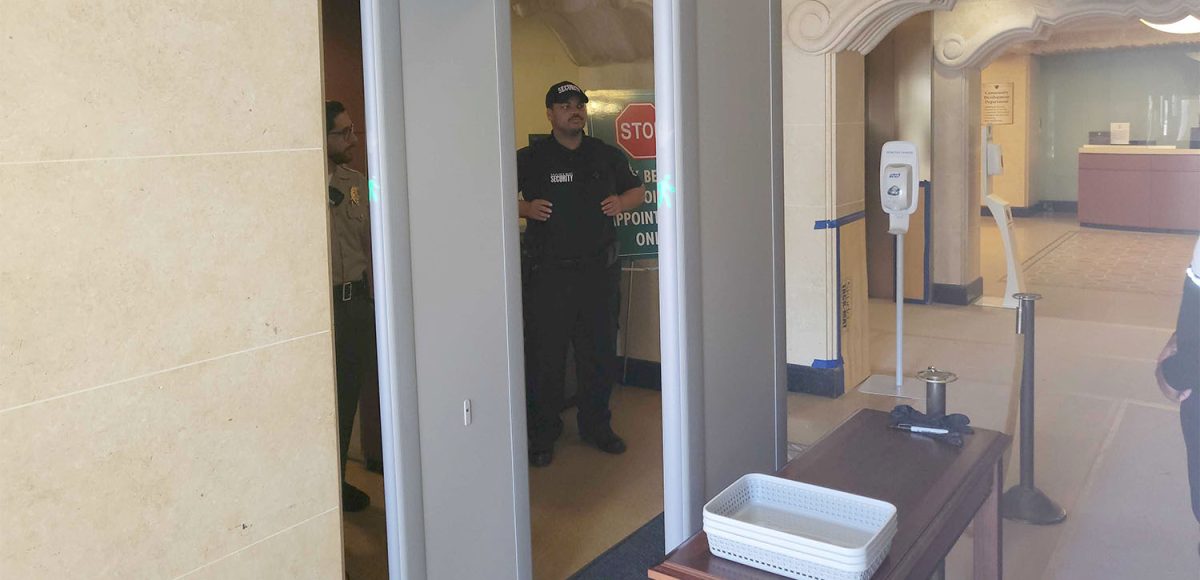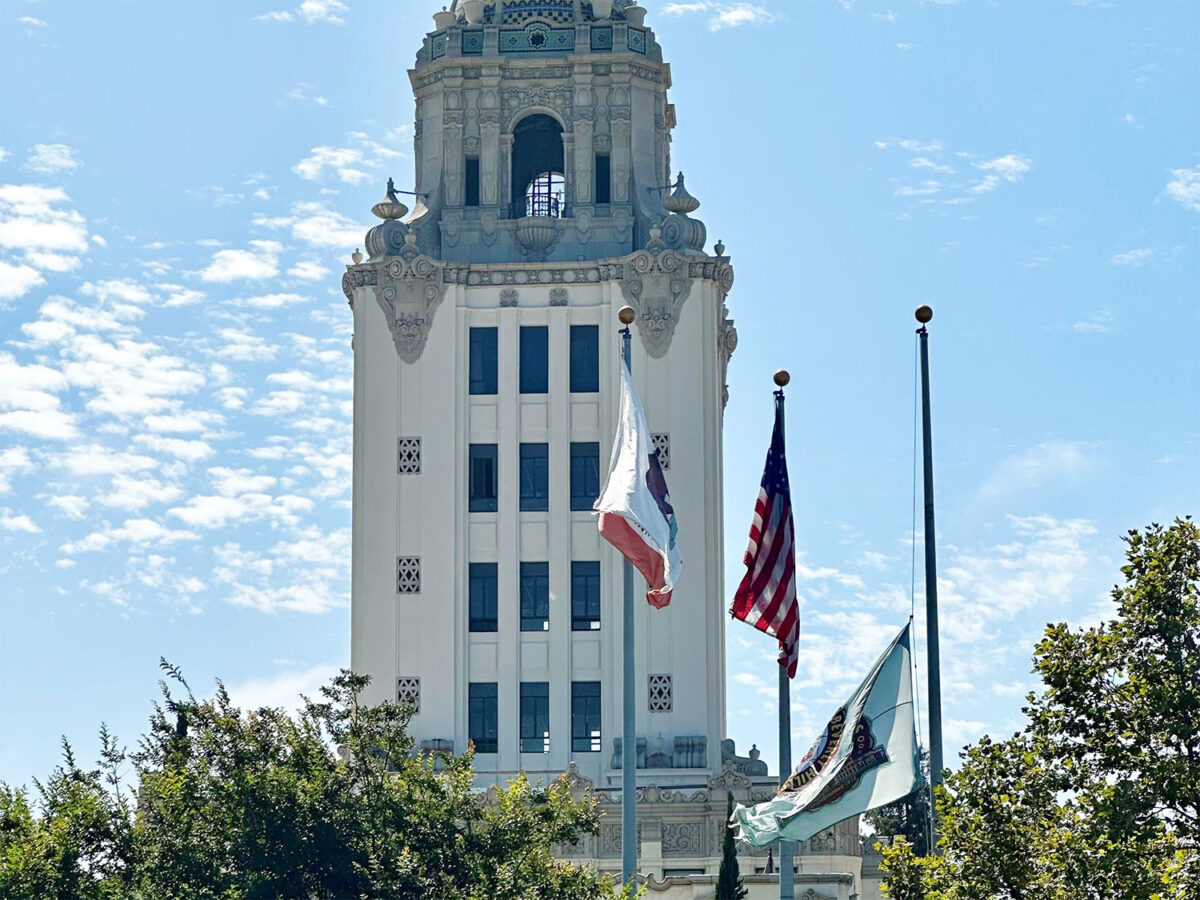Nearly a year has passed since the launch of the City Hall retrofit project and phase one is now on the brink of completion. The Courier met with City Hall staff to get an update on the ongoing improvements to the building’s construction and security.
City Hall was built in 1932, and, according to City Architect Mandana Motahari, it was constructed very well compared to the standards at the time. However, after the City of Los Angeles passed a mandatory retrofit ordinance in 2015, the City of Beverly Hills decided to perform its own analysis of City Hall. That analysis revealed that the City Hall was in need of significant improvements to its seismic capabilities, based on 3D modeling. COVID forced a delay in the plans until September of 2021.
City Hall is a non-ductile concrete building meaning that the whole structure system and frame are made of concrete. The lack of steel reinforcements made the building brittle, flexible and incredibly vulnerable to an earthquake. “At the time this building was used, people didn’t use a lot of reinforcing,” said Motahari. “Now that we have more technology, we can analyze buildings better and learn from past experiences.”
The retrofit project is divided into multiple phases, with the first one scheduled to finish in late September. Phase one consisted of applying shotcrete, a projectile-concrete application that was used to reinforce all nine floors of City Hall, including the famous dome and cupola. The process utilized the elevator shafts, which helped maintain City Hall’s historical fabric.
“It took about a year, and considering the pandemic construction industry, supply-chain shortages and all that, I think we’ve done well,” said Motahari.
The elevators have also been extended to service all the way up to the tower floors, covering nine floors opposed to the previous five. Construction is currently in the process of reinforcing the roof area, so that a roof deck can be applied and used as an outdoor terrace area.
The next step for construction is to make tenant improvements, which is expected to take a couple years. This part of the project is still in the engineering, design and funding stages and will include more office conversions.
For now, Mandana is excited about the completion of the initial stage.
“Phase one significantly improves the tower performance, overall seismic performance of the building and helps ensure occupant safety,” said Mandana. “What excites me is for people to walk away and say nothing has changed, yet the building is a lot safer.”
In addition to construction, additional security modifications have taken effect at City Hall. The building is now secured with metal detectors at the entrance. The Beverly Hills Office of Emergency Management oversees all security measures, making sure the building is free of any threats.
“In this ever-changing security environment, we want to make sure that we’re prioritizing the safety and security of our staff and all the patrons to City Hall,” Emergency Manager Meena Janmohamed told the Courier.
“Over the past few years Nastec, Covered 6 and the Real Time Watch Center have been part of ongoing facility security upgrades and studies.”







